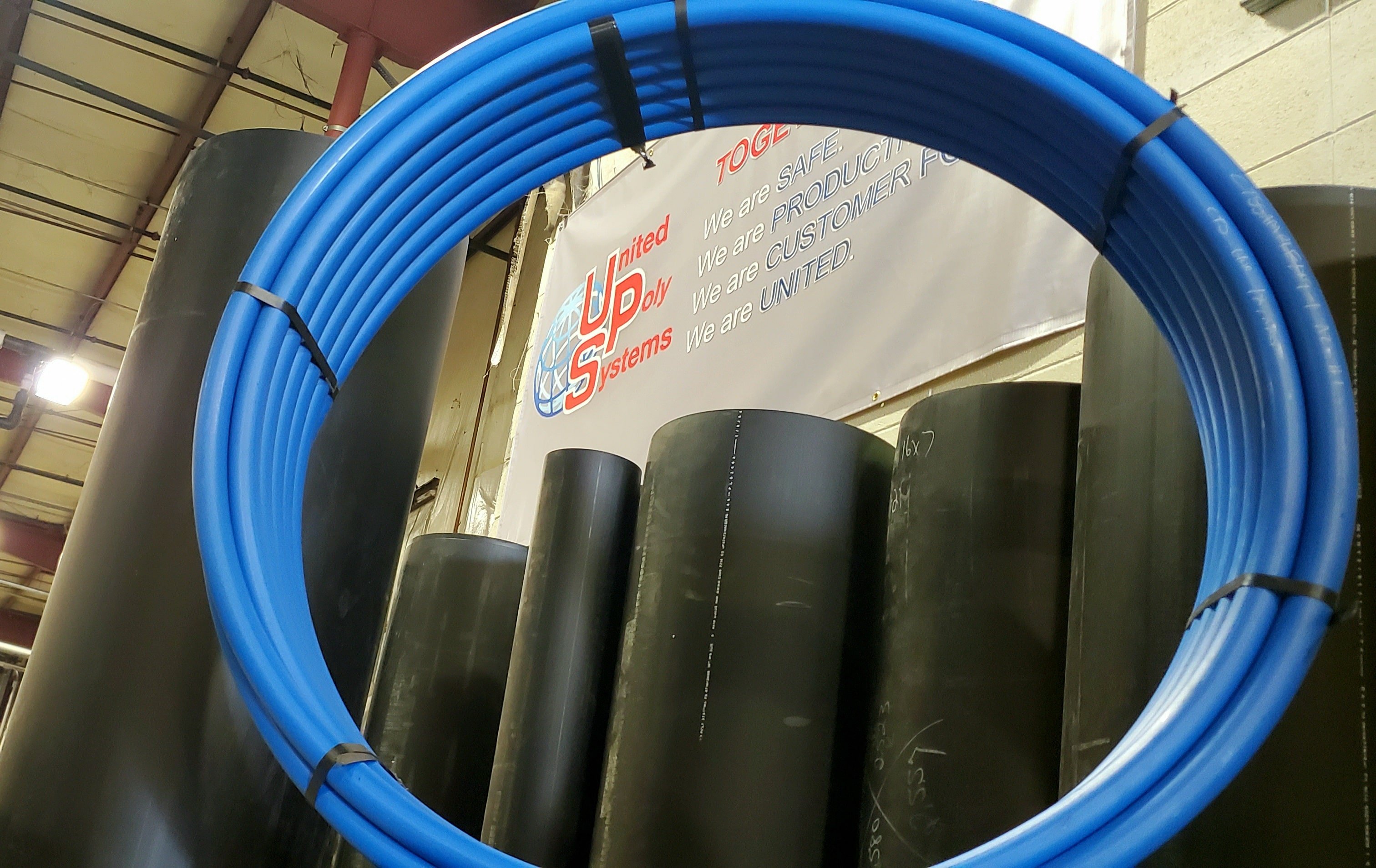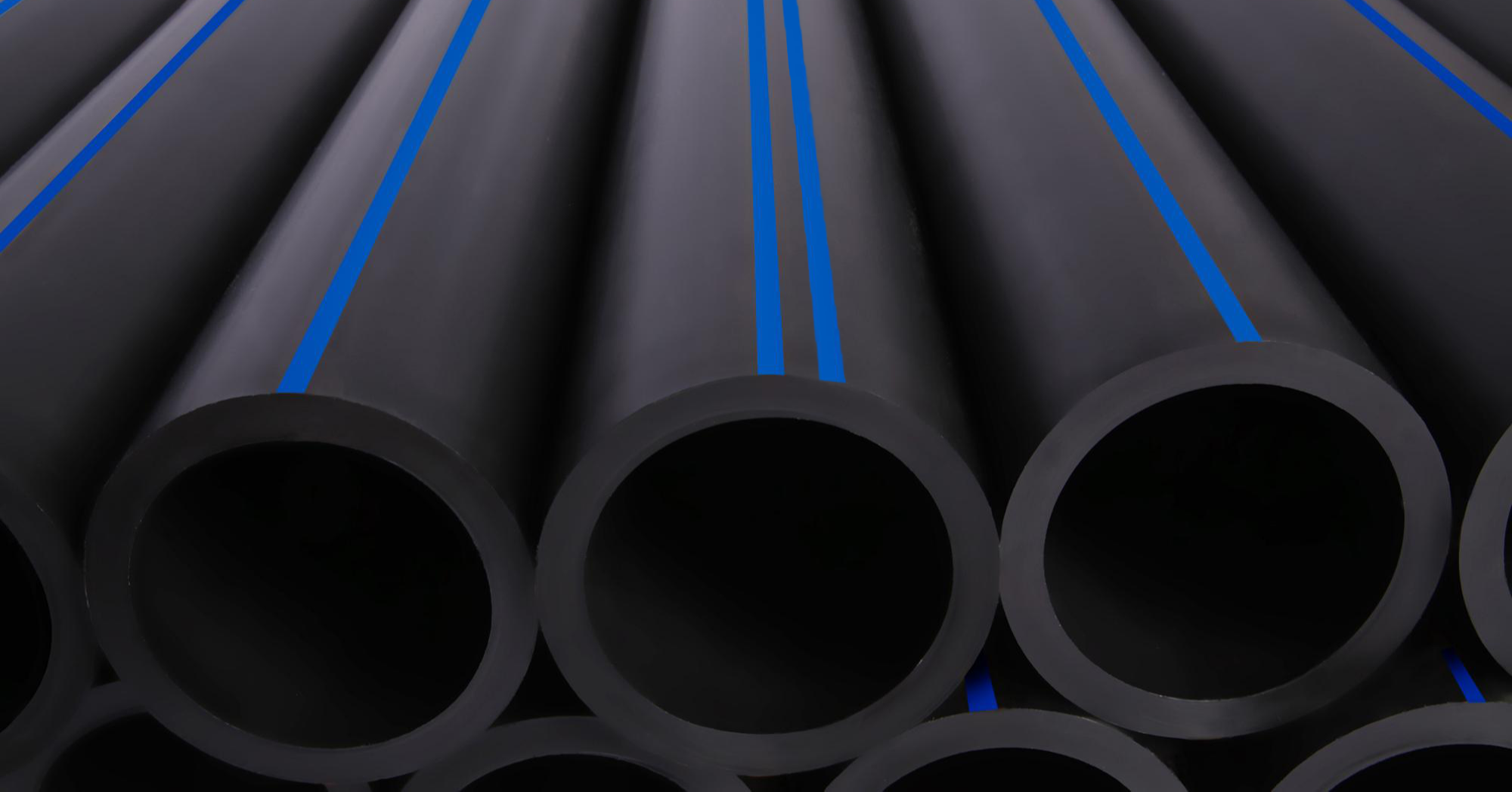custom hdpe pipe manufacturing Midland TX: Innovations Shaping the Market
The Necessary Steps for Successful Setup of HDPE Pipeline in Your Following Job
Successful installment of HDPE pipeline needs cautious preparation and implementation. Secret actions include evaluating task needs, preparing the site, and selecting appropriate joining strategies. Each phase plays an important role in making certain the honesty and efficiency of the pipeline. Understanding these vital steps can significantly influence the general success of the project - Texas hdpe pipe manufacturer. However, the subtleties of each step might hold the trick to overcoming typical obstacles dealt with during installation
Recognizing the Advantages of HDPE Pipeline
High-density polyethylene (HDPE) pipe supplies countless benefits that make it a recommended choice for different applications. Its high resistance to rust and chemicals guarantees toughness in requiring settings, significantly expanding the life expectancy of installations. Furthermore, HDPE's flexibility allows for less complicated setup, specifically in difficult terrains, as it can bend without breaking. The lightweight nature of HDPE pipeline streamlines transportation and handling, lowering labor expenses throughout installation.
HDPE pipeline is understood for its low rubbing coefficient, which boosts fluid circulation and decreases power consumption. Its smooth construction reduces the risk of leakages, adding to much better source administration and environmental management. Furthermore, HDPE is recyclable, straightening with sustainable methods and decreasing ecological effect. In general, the combination of stamina, flexibility, and eco-friendliness makes HDPE pipe an exceptional choice for a variety of tasks, from water circulation to commercial applications.
Preparation Your HDPE Pipe Installment
When planning a setup of HDPE pipe, mindful consideration of numerous key elements is vital to safeguard an effective project. Job supervisors must examine the details demands of the pipe, including the meant usage, circulation rates, and environmental conditions. Comprehending these criteria will certainly direct the selection of ideal pipeline measurements and material quality.
Next, timelines need to be developed, considering purchase timetables and any kind of possible hold-ups. Coordination with neighborhood authorities for authorizations and regulatory conformity is also necessary. Additionally, a thorough budget needs to be prepared, incorporating all prices connected with products, labor, and machinery.
Finally, it is essential to engage a qualified group experienced in HDPE pipe installment. Their knowledge will help mitigate risks, warranty adherence to market requirements, and inevitably add to the job's success. Comprehensive planning lays the foundation for a smooth setup procedure and lasting performance of the HDPE piping system.
Preparing the Website for Installment
Proper site prep work is crucial for the successful installation of HDPE pipe. Before installation begins, the site needs to be extensively assessed to assure it satisfies all needed requirements. This consists of surveying the ground for existing structures, energies, and prospective risks that could restrain the setup process.

Correct altitude and placement should be established to maintain a consistent slope for drainage functions. Correct drainage around the installment website is likewise crucial to avoid water buildup, which can bring about problems down the line.
Methods for Joining HDPE Pipelines
Accomplishing a trustworthy link in between HDPE pipes is necessary for making sure the integrity and longevity of the installation. Various methods exist for signing up with these pipes, each matched for various project demands. Blend welding is among the most usual approaches, making use of warmth to bond the pipeline finishes together, creating a seamless and sturdy connection. This technique can be further classified into socket fusion and butt fusion, relying on the pipe configurations.
Mechanical installations are an additional alternative, employing clamps and threaded ports to sign up with sections of HDPE pipe. While usually faster to mount, they might need extra maintenance with time. Electrofusion is a specific method that involves making use of electric present to heat and fuse the pipes via particularly made installations, making certain a strong bond. Selecting the suitable signing up with method is important, as it straight affects the overall efficiency and reliability of the HDPE piping system in the designated application.
Examining and Inspection of Installed Piping
The testing and inspection of set up HDPE pipes are vital to guaranteeing their performance and longevity. This process incorporates aesthetic evaluation strategies, pressure testing approaches, and leak discovery procedures to determine possible problems. By using these methods, experts can validate the integrity of the installment prior to it is placed right into usage.
Aesthetic Inspection Techniques
Employing effective visual evaluation methods is essential for guaranteeing the stability of mounted HDPE pipes. Inspectors need to systematically check out all visible sections of the pipe to determine any indicators of damages, imbalance, or improper setup. Trick signs to examine include joint integrity, surface abnormalities, and connections. Inspectors might use devices such as amplifying glasses or cams to improve visibility and detail. It is necessary to inspect for indications of ecological stress, such as distorting or extreme bending, which can jeopardize efficiency. Regular documentation of findings enables tracking modifications in time and aids guide required repair services. By adhering to recognized aesthetic evaluation procedures, task groups can especially decrease the risk of future failings and ensure long-lasting integrity of the piping system.
Stress Examining Techniques
Aesthetic examination offers as a preliminary procedure, yet it is not sufficient by itself to guarantee the efficiency of mounted HDPE pipes. Pressure testing techniques are crucial for guaranteeing the honesty of these systems. Usually, hydrostatic screening is used, where the pipes are loaded with water and based on stress degrees above the designated operating stress. This method assists identify weak points you can try these out or prospective leaks. Pneumatic testing can additionally be made use of, although it carries higher risks as a result of the compressibility of air. Despite the approach chosen, sticking to market standards and security protocols is essential. After carrying out pressure examinations, complete documentation is essential to validate the outcomes and verify that the installation satisfies all operational needs before continuing to the next phase of the project.

Leak Discovery Procedures
Just how can one guarantee that set up HDPE pipes are devoid of leakages? Efficient leakage detection treatments are essential to secure the integrity of the system. At first, aesthetic inspections should be performed, looking for indicators of water accumulation or soil erosion around pipeline joints. Following this, stress screening can verify the system's toughness. A common method is the hydrostatic test, where water is introduced under pressure, keeping an eye on for declines that show potential leakages. Additionally, advanced innovations, such as acoustic sensors or infrared thermography, can identify leakages that might not show up. Routine monitoring and maintenance additional add to the durability of HDPE pipes, guaranteeing they remain leak-free throughout their functional life expectancy. Appropriate paperwork of these procedures is essential for conformity and future recommendation.
Upkeep Tips for Long-Term Efficiency
To ensure the long life of HDPE pipes, establishing a regular inspection routine is crucial. This positive approach enables the very early discovery of possible issues, lessening expensive fixings. Furthermore, applying appropriate cleansing techniques will certainly aid preserve peak performance and protect against buildup that can impact capability.
Normal Inspection Set Up
HDPE pipes are recognized for their toughness and resistance to rust, developing a routine assessment schedule is crucial for ensuring their lasting efficiency. Routine evaluations aid determine possible issues such as leaks, joint stability, and ecological influences that might influence the pipeline's functionality. It is advised that inspections occur at the very least biannually, or a lot more regularly in atmospheres with severe conditions. American Plastics HDPE Pipe Manufacturing. Throughout these evaluations, visual checks need to be conducted to discover signs of wear or damage. Furthermore, utilizing technology such as ultrasonic screening can offer more understandings right into the pipe's problem. By applying a structured assessment routine, task managers can proactively resolve problems, therefore prolonging the lifespan of HDPE pipelines and preserving system efficiency
Appropriate Cleansing Techniques
Appropriate cleaning methods play a crucial function Click This Link in keeping the long-term performance of HDPE pipelines. Regular cleaning prevents the build-up of debris, debris, and biofilm, which can cause blockages and minimized circulation effectiveness. Operators needs to employ approaches such as high-pressure water jetting or foam cleaning to properly remove impurities without damaging the pipe surface. It is vital to stay clear of making use of extreme chemicals that may weaken HDPE material. In addition, scheduled upkeep checks ought to include aesthetic evaluations for any indicators of wear or damages. Appropriately trained personnel need to accomplish these cleansing processes, ensuring conformity with safety and security and ecological policies. By implementing these methods, the life-span of HDPE pipelines can be significantly extended, making certain ideal efficiency throughout their operational life.
Frequently Asked Inquiries
What Are the Environmental Influences of HDPE Pipe Manufacturing?
The ecological effects of HDPE clean plumbing pipes pipeline manufacturing consist of greenhouse gas discharges, power usage throughout manufacturing, possible plastic air pollution, and challenges in reusing. Nonetheless, HDPE's longevity and resistance to deterioration can reduce some ecological worries.
How Does HDPE Pipeline Contrast to Various Other Materials?

What Tools Are Required for HDPE Pipe Setup?
Important devices for HDPE pipeline installation include a blend machine, pipe cutters, shovels, determining tape, and safety and security gear. Appropriate devices assurances reliable, risk-free handling and installation, adding to the job's overall success and integrity.
Exist Any Type Of Specific Rules for HDPE Pipeline Setup?
Particular regulations for HDPE pipe installation differ by region, frequently governed by neighborhood, state, or federal codes. Compliance with these regulations assurances security, environmental protection, and capability, making adherence essential for effective task results.
Can HDPE Pipes Be Recycled After Usage?
Yes, HDPE pipes can be reused after use. Their polycarbonate nature enables for reprocessing, making them appropriate for recycling into new items. This sustainability facet adds to ecological conservation and promotes round economic climate techniques in building.